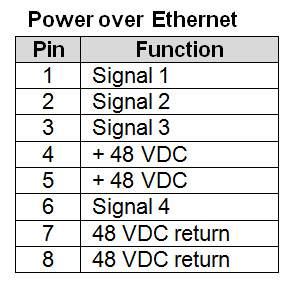Control Network Newsletter

January, 2010: Should You Consider PoE?
 Suppose you need to install an access card reader or a security camera on your Ethernet network at some remote spot. Furthermore, the nearest source of power for your installation is 200 feet away. Battery operation is impractical and solar power not even feasible. What do you do? You could run a dedicated power line to your new equipment, but if your device supports Power Over Ethernet (PoE), the better solution is likely to be PoE.
Suppose you need to install an access card reader or a security camera on your Ethernet network at some remote spot. Furthermore, the nearest source of power for your installation is 200 feet away. Battery operation is impractical and solar power not even feasible. What do you do? You could run a dedicated power line to your new equipment, but if your device supports Power Over Ethernet (PoE), the better solution is likely to be PoE.
PoE is becoming more and more useful in a variety of situations – perhaps yours. So what is PoE and how do you use it? Although the subject can get complicated, this article focuses on the most common solution for 10/100 Ethernet.
PoE technology provides power to Ethernet devices that have no immediate source of power. It does this by placing 48 VDC onto the otherwise unused pairs of your CAT5 (or higher) cable as shown below or onto the data pairs.

Two basic types of equipment are involved in PoE. Your card reader or camera (or similar equipment) is called the powered device (PD). The equipment that supplies the power is called the power sourcing equipment (PSE). Your PD can consume up to 13 W – even if installed 100 meters from the PSE.
The least expensive way to add one PD in a network that has no existing PoE equipment is to use a midspan device, commonly called an injector. An injector receives signal from a non-PoE switch, adds 48 VDC on the unused pairs and delivers both power and data to the PD.
Visit the EIPE PoE Injector product page for more information.
In This Issue
![]() Feature Story
Feature Story
New Products To Be Introduced at AHR Expo 2010
![]() Technology Update
Technology Update
Should You Consider PoE?
![]() EMEA News
EMEA News
2009 SPS/IPC/Drives Show Report
![]() Essentials
Essentials
BAS Router Upgraded to a BACnet Multi-network Router with BBMD